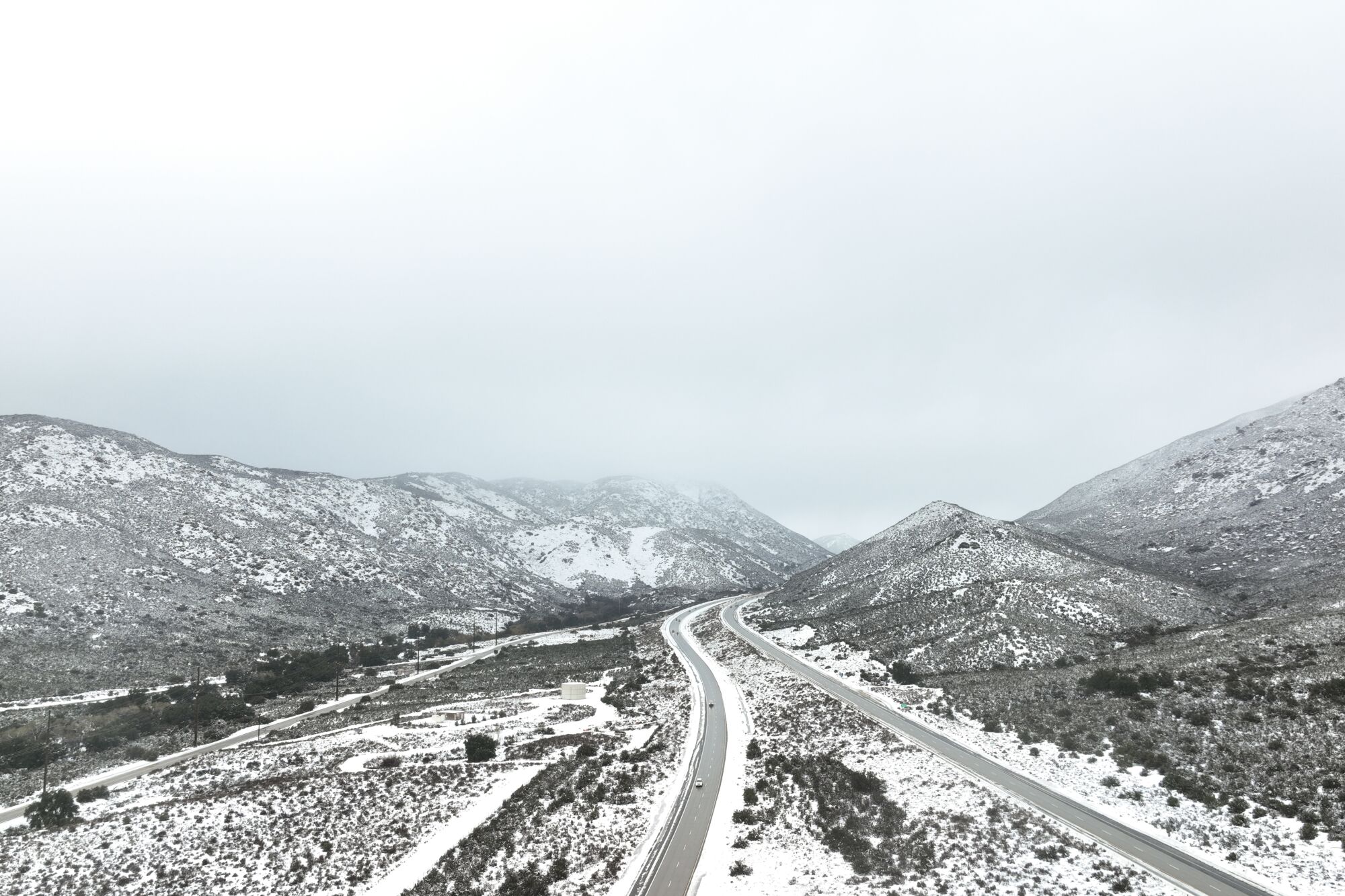We are having quite an end to the month here in Encinitas. At the time of this writing, we are expecting the biggest and coldest winter storm to hit our region in some time. A blizzard warning has been issued by the National Weather Service for Los Angeles for the first time since 1989. If you thought driving in a dusting of rain during rush hour was bad, just look at the forecast for the local mountains:
@US_Stormwatch
One of the worst winter storms of the 21st century is about to hit the Southern California mountains. Up to 7+ feet of snow could fall above 4,000 feet, with Mount Baldy forecast to be the snowiest ski resort on Earth over the next 5 days, with 100+ inches of snow expected.

100 inches of snow would be record for the US in a 24-hour period – and it would occur in Southern California no less. Will it happen? It’s hard to say – but forecasters are pretty darn accurate within about 5-7 days. That’s not to say that they don’t make mistakes because they absolutely do. Like all complex systems like global weather patterns, some things cannot be modeled with 100% accuracy. But if you have a Surfline or Opensnow subscription, you can use their forecasts and know you’ll have a high probability of getting perfect barrels in Mexico or untracked powder in British Columbia and be back in time for work on Monday.
Which brings us to stock market and economic forecasts. It reminds us of the old joke:
Why did God create economists? To make weather forecasters look good.
You might remember that economists put the odds of a recession in 2023 at 70% due to rising interest rates and high inflation. The housing market was meant to grind to a halt as higher mortgage rates caused monthly payments to become unaffordable at current prices. Higher prices of things like food, energy, and rent were going to slow spending dramatically and cause the US economy to fall into a slowdown. Well, this is some kind of a weird recession considering the some of the data that just came out this month.
New home sales in January were way up. Sales are still down almost 20% nationally from a year ago but stories of swarmed open houses and bidding wars around San Diego have begun again.
@LizAnnSonders
Strong new home sales in January, +7.2% m/m vs. +0.7% est. & +7.2% in prior month (rev up from +2.3%) … median new home price fell by 0.7% y/y to $427,500; months’ supply fell from 8.7 to 7.9

Retail sales smashed expectations in January. Job growth surged in January as well.
Retail sales grew in almost every category including at restaurants, car dealerships, department stores, furniture sellers and appliance outlets. Consumer spending at restaurants and bars rose 7.2%, the most since March 2021
“Consumers are in pretty decent shape,” said Joel Naroff, president of Naroff Economics LLC. “When people are comfortable in their job situation, that translates into consumer spending”.
While this is good news for the economy, it’s not necessarily what the Federal Reserve is looking for as they are trying to squash a 40-year high in inflation. The metric they pay particular attention to is called PCE (Personal Consumption Expenditures) – a measurement of consumer spending on goods and services. Unfortunately it is spiking again and the markets are giving back the gains from the last few months.
@LizAnnSonders
Ouch: PCE core services ex-housing (Fed’s most-watched measure currently) moved higher in January, with 3m annualized % change (orange) moving up to +5.2% and 6m annualized % change (purple) moving up to +5.4%

So what does this mean for the markets? Likely more interest rate hikes to come and the Fed will probably have to keep rates elevated until inflation abates. This could temporarily put a ceiling on stock prices unfortunately. The good news? Higher interest rates on our savings and bond investments for one. Also – international stocks, especially European stocks, have really started to outperform. Add the reopening of China from COVID restrictions and that makes us pretty excited that portfolios can still perform despite the inflationary issues we’re facing in the US. We’ll likely be dealing with the battle between a strong economy / higher inflation and a potential recession for the near future. Stay tuned.
And finally, I’m sure we’ll be seeing a lot more photos like this one when the storm passes through. This is from I-8 in Pine Valley this weekend. Stay warm out there.




